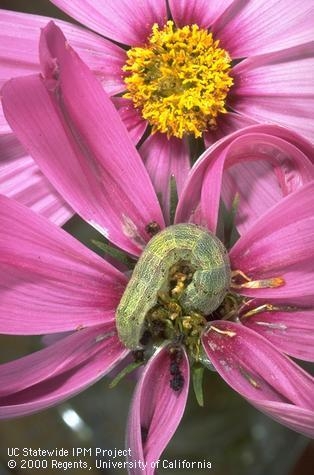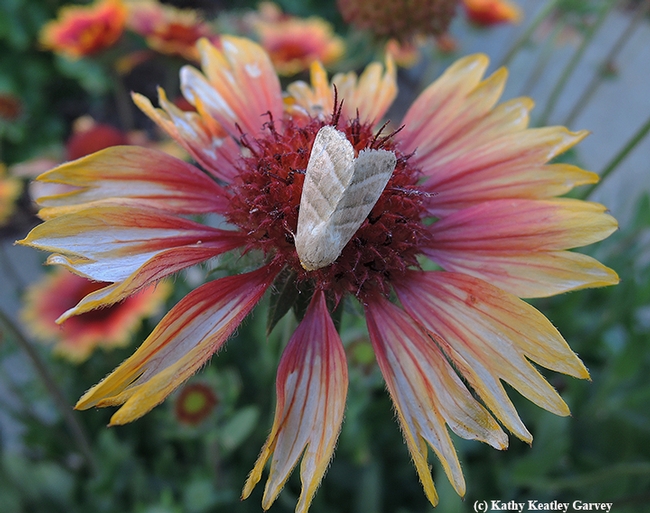
And then one morning you see a moth on your blanket flower (Gaillardia). Hmm...
What is it? The moth (below) is "Heliothis virescens, the tobacco budworm, adult," said Lepitopteran expert Art Shapiro, UC Davis distinguished professor of evolution and ecology. "The species is a seasonal immigrant from the south. There is a sibling species, H. subflexa, that is quite rare and feeds only on ground cherry (genus Physalis, Solanaceae).
Like to learn more about moths? Statewide, nationwide and worldwide?
The Bohart Museum of Entomology at the University of California, Davis, will celebrate Moth Night at its open house from 8 to 11 p.m., Saturday, July 30. The theme: "Celebrate Moths!"
Activities, free and open to the public, will take place inside the museum, located in Room 1124 of the Academic Surge Building on Crocker Lane, and outside the building where black lighting will be set up to observe and collect moths and other insects.
Entomology graduate student Jessica Gillung will participate, "so there will be an entomologist fluent in Spanish and Portuguese on site," said Tabatha Yang, the Bohart Museum's education and outreach coordinator.
Visitors are invited to view the Bohart Museum's vast collection of worldwide moth specimens and participate in family friendly craft activities featuring a moth motif. Scientists will explain how to differentiate a moth from a butterfly. Free hot chocolate will be served.
The event is in keeping with International Moth Week: Exploring Nighttime Nature, July 23-31, a citizen science project celebrating moths and biodiversity. The annual event is held the last week of July.
Moths continue to attract the attention of the entomological world and other curious persons. Scientists estimate that there may be more than 500,000 moth species in the world. They range in size from a pinhead to as large as an adult's hand. Most moths are nocturnal, but some fly during the day, as butterflies do.
The Bohart Museum, directed by Lynn Kimsey, professor of entomology at UC Davis, is a world-renowned insect museum that houses a global collection of nearly 8 million specimens. It also maintains a live “petting zoo,” featuring walking sticks, Madagascar hissing cockroaches and tarantulas. A gift shop, open year around, includes T-shirts, sweatshirts, books, jewelry, posters, insect-collecting equipment and insect-themed candy.
The Bohart Museum's regular hours are from 9 a.m. to noon and 1 to 5 p.m. Mondays through Thursdays. The museum is closed to the public on Fridays, Saturdays and Sundays and on major holidays. Admission is free. More information on the Bohart Museum is available by contacting (530) 752-0493 or bmuseum@ucdavis.edu
Tobacco Budworm
Access the UC Statewide Integrated Pest Management (UC IPM) website if you want to learn more about the tobacco budworm, which, in caterpillar stage, is a field crop pest of tobacco, alfalfa, clover, cotton, soybean and flax. And also attacks many of the plants in your vegetable garden and flower bed. Vegetable garden: cantaloupe, pea, pepper, lettuce, squash, tomato and more. Flower bed: geraniums, petunias, mallow, marigold, zinnia, snapdragon, zinnia and more. If you can't distinguish the larva of a tobacco budworm and cabbage looper from a variegated cutworm or a beet armworm, check out this UC IPM page. Then, to glean more information, search for "Tobacco Budworm" or "Heliothis virescens" on the UC IPM site.
Attached Images:
